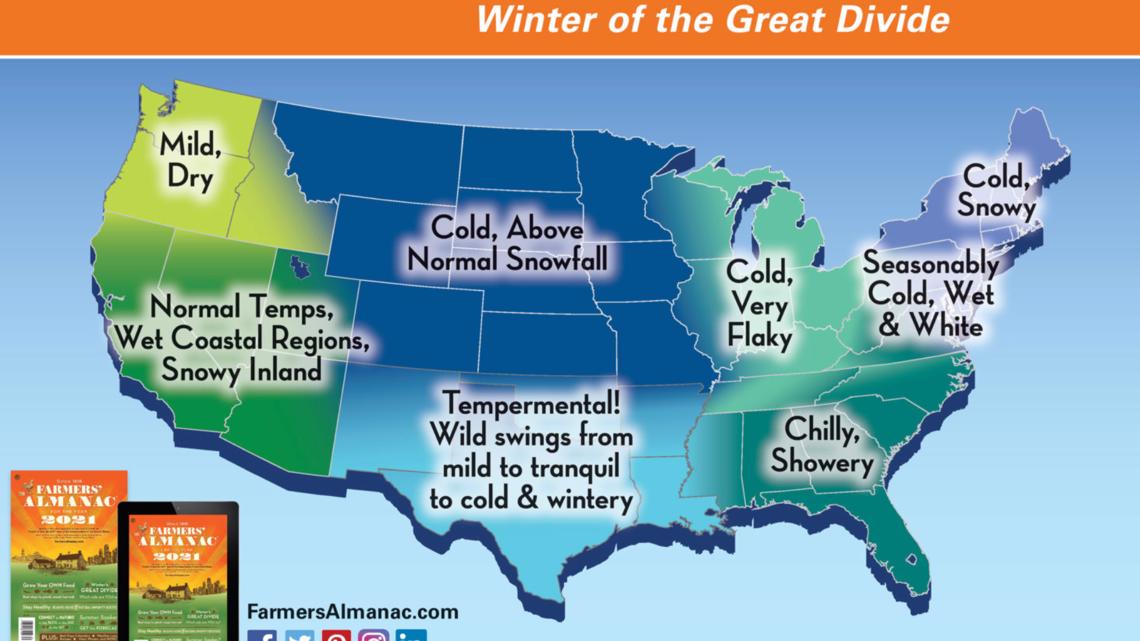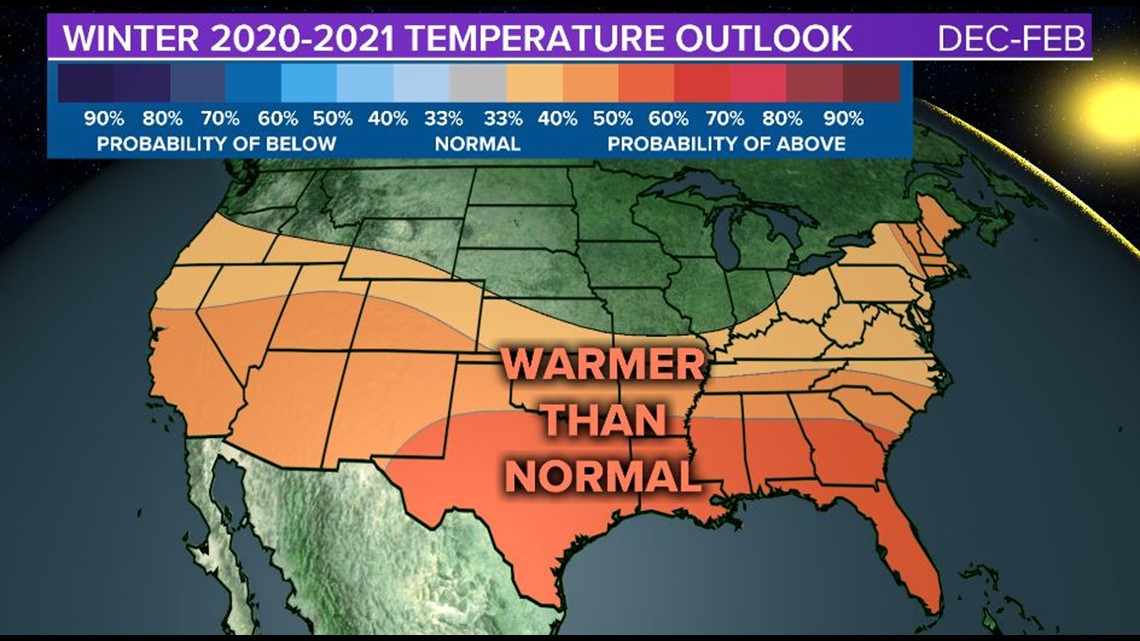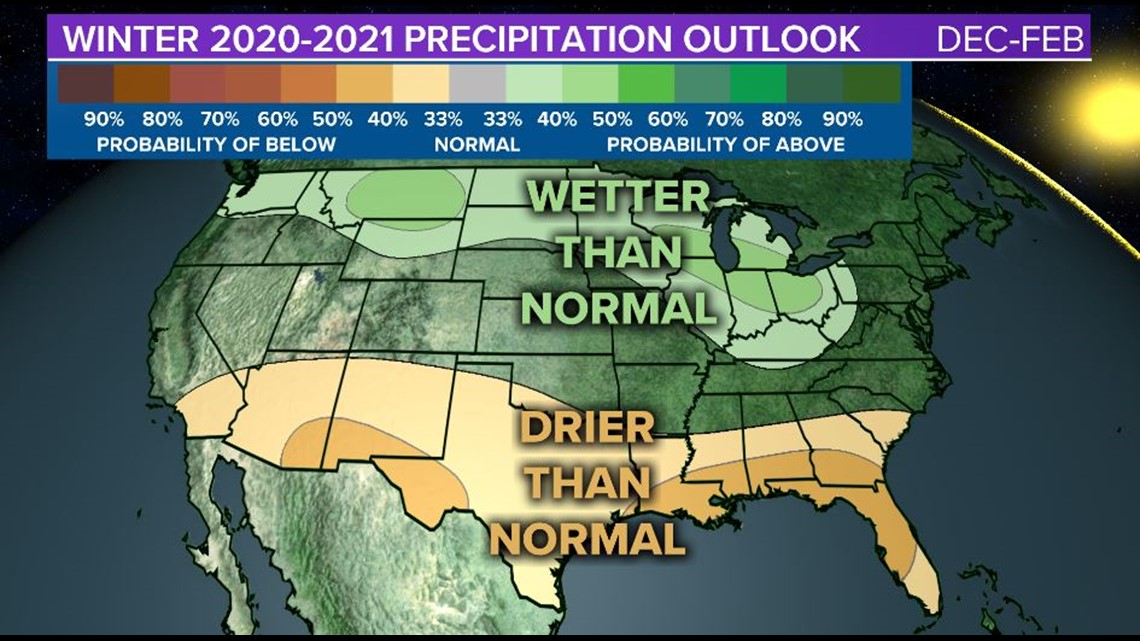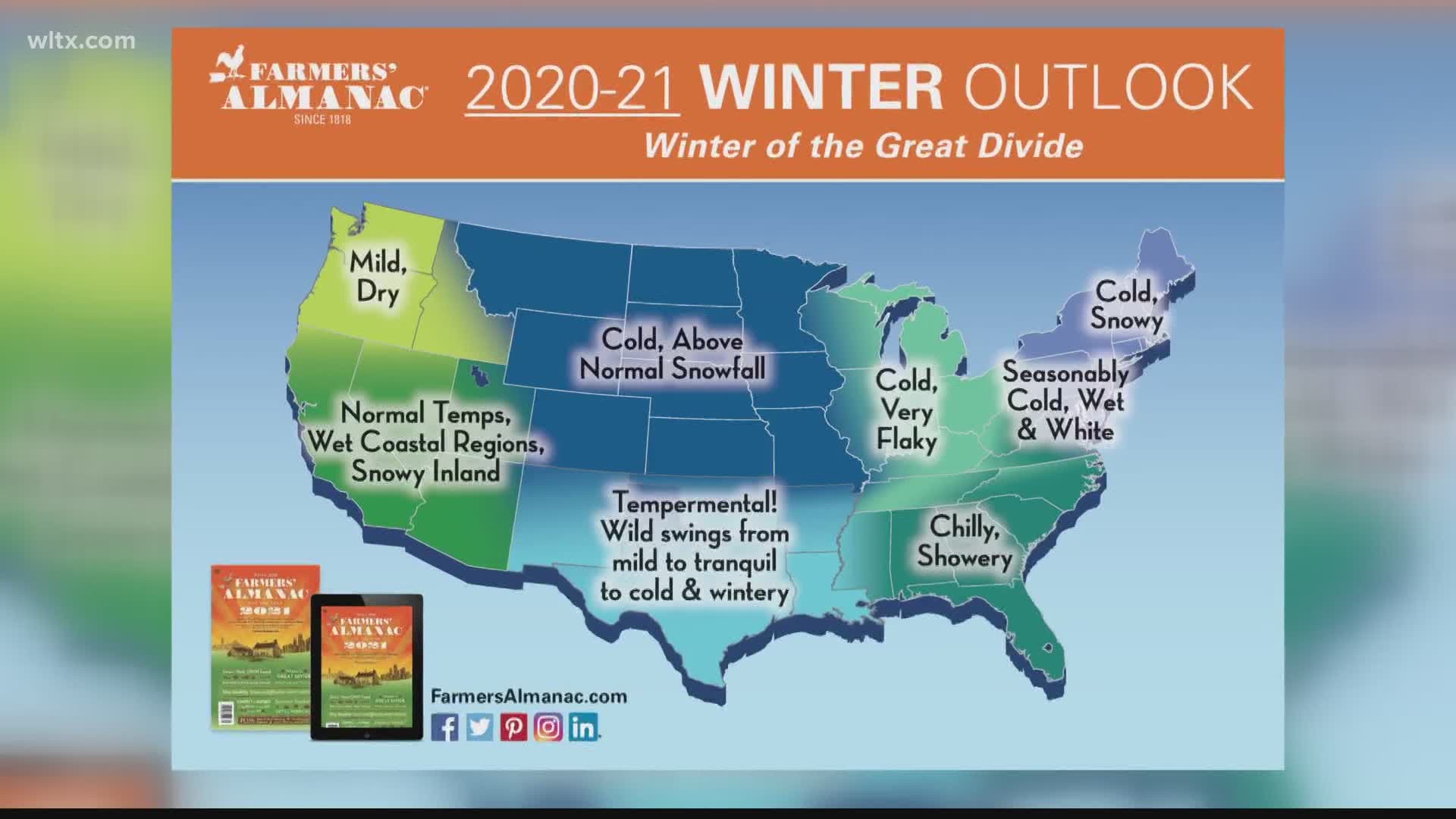COLUMBIA, S.C. — The Farmers’ Almanac has released their winter 2020-2021 forecast, calling it the “Winter of Great Divide” across the United States.
Here in the Southeast, they predict a chilly and showery winter with below normal temperatures and average rainfall levels.
It’s important that you take this forecast with a grain of salt.
This year's forecast and last year's forecast are fairly similar. They predicted that winter would be “brisk and wet,” which sounds pretty similar to this year's forecast of “chilly and showery”.


Last winter was very wet, with record breaking rainfall in December and above normal rainfall in January and February. However, temperatures trended above normal through the season, so it might not be the best definition of “brisk”.
One thing to note about the forecasts from the Farmers’ Almanac is that they do not tell you how they make them.
On their website, they deny using any computer satellite tracking equipment, and rather use a secret formula that considers sunspot activity, tidal action of the Moon, and the position of planets. They say the only person who knows this formula is their "weather prognosticator" who uses the pseudonym Caleb Weatherbee.
More widely accepted in the scientific community is the forecast from the National Oceanic and Atmospheric Administration. The scientific basis for these forecasts is made known and the forecasts are peer reviewed.
RELATED: Local Forecast
This year, NOAA is forecasting above normal temperatures for most of the country. In South Carolina, we have a 40 to 50 percent chance of having above average temperatures.


In terms of rainfall, NOAA predicts below average rain in the southern United States. In South Carolina, we are under a 33 percent chance of seeing this below average rainfall.


One reason for NOAA’s forecast is the ENSO cycle, which has a 55% probability of transitioning to La Nina through the winter. La Nina conditions typically lead to warmer than normal winters in the Southeast.

